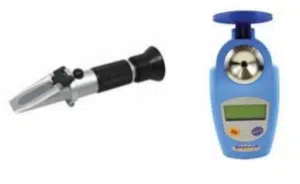Best Tips for Keeping Your Solvent Happy
Optimal plate-making needs a balanced plate washout solution. Nicole Ross, Global Product Support Manager, explains how the right instruments can make washout monitoring easy.
Have you ever found yourself playing detective after making a plate because your final plate appearance has suddenly changed? Your washout chemistry could be the culprit.
The balance of your plate washout solution is a key component to optimal plate making and should be monitored periodically. A common misconception is the belief that there is no balancing required. Adding back or “topping off” plate chemistry can achieve this balance. Topping off brings your chemistry back to its original strength. This is true with any chemistry, be it two components or more.
Starting at the base
Baseline values from virgin solvent are important to identifying a solvent balancing problem. Always keep a sample of virgin plate washout solution available for reference at your site. Documenting your measurements while performing the procedures below is also key to identifying current chemistry issues, and/or a chemistry issue on the rise.
Proper record keeping will allow you to notice solvent degradation or deviation over time.
What disrupts in-house distillation units?
- Power surges
- Faulty wiring
- Incorrect ratios of automatics add back from the distillation unit
- Can be a result of power surges, broken equipment, faulty wiring, etc.
- Control of temperature during distillation
- Temperature influences automatic measurements, as well as the percentage of add back chemistry
- Cleanliness of distillation tank
- A dirty distillation tank will introduce contamination into your FLEXCEL NX plate workflow
Common symptoms of chemistry imbalance
These changes to the plate and processing environment could mean an imbalance in the washout solution:
- Distilled solvent is not clear
- Drying times change dramatically
- Excessive plate swell
- Plate mottle
- Orange peel
- Plate floor finish changes dramatically
- Solvent foaming in distribution trays
Note: Cloudy solvent in your processor tank is typically indicative of water condensation inside the plate processor, rather than a chemistry imbalance.
Supplies needed to verify a chemistry imbalance

- Eye dropper
- Glass jar or beaker
- Lint free cloth
- Thermometer
- Verifies temperature, which is important when measuring plate washout solvent
- Digital or analog refractometer
- Measures BX (Brix) value
- Sample of well-mixed virgin (new, non-distilled) plate washout solution for comparison
- Ensure any virgin plate washout solution is contained in glass, or an approved drum or plastic container. Some plastic containers will degrade from the chemistry contained inside. This can disrupt any readings you take.
How to verify using a refractometer (Analog or Digital)
Note: Clean any tools prior to use with Isopropanol (IPA) and allow to fully dry to avoid contaminates before starting. Contaminates will compromise your measurements and can lead to more unknowns.
- Obtain a well-mixed sample in a glass jar from your distillation unit or drum, after the recycling process is complete
- Obtain a well-mixed sample of virgin solvent in a glass jar
- This is available from your solvent supplier where you purchase top off or add back chemistry
- Allow both samples to come to room temperature
- Record temperatures of both virgin and distilled plate washout solution for future reference when performing this procedure
- Using a clean eyedropper, place several drops of virgin solvent on a clean refractometer surface
- Record BX (Brix) value
- Clean refractometer surface again with Isopropanol (IPA) using a lint free cloth, and allow to dry
- Using a clean eyedropper, place several drops of newly distilled solvent on a clean refractometer surface
- Record BX (Brix) value
- Look for variations between your recordings
- If there is no variation, you can rule out your chemistry as the root cause, and can focus on other variables
- If you observe a variation that is more than an acceptable range, specific chemical addbacks will be required. (Contact your solvent manufacturer for acceptable range and required actions)
- Addbacks are always solvent dependent and contingent on the number of components in the plate washout solution. (Always refer to your solvent manufacturer to verify the correct solvent add backs to your washout solution)
- In some cases, the root cause of the chemistry imbalance may be the distillation equipment itself. (Always refer to your distillation equipment manufacturer to resolve mechanical issues)
Note: Some regions commonly use a hydrometer to look for chemistry imbalance. The same principles apply in this case. However, it is important to check with your solvent manufacturer to understand what range is acceptable for the hydrometer needed. Measurements using a hydrometer should always be referred to as Specific Gravity (SG).
Reference Material
You can find more information on washout solutions and optimizing platemaking on Partner Place:
- Trouble shooting washout and other processing issues: Answer ID 73372
- Percent (%) Solids for a new washout solutiong and/or processor: Answer ID 73346
Nicole says:
 Sudden plate changes can be caused by a chemistry issue with the solvent. But how can you determine if washout chemistry is the culprit?
Sudden plate changes can be caused by a chemistry issue with the solvent. But how can you determine if washout chemistry is the culprit?
From knowing what can disrupt in-house distillation units to how to verify a chemistry imbalance, this guide explains how to keep your plate washout working for optimized printing.